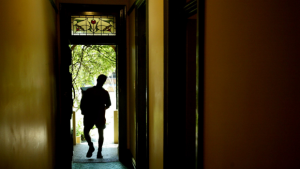Getting your foot in the door isn’t cheap, but sometimes it’s where the money is spent that comes as a shock to first home buyers.
It’s not over once the deposit has been saved and the winning offer made. Experts have identified five areas where hidden costs might be lurking, and how a buyer can avoiding paying more than they need to.
Pre-purchase research
Anna Porter, a property valuer and principal at strategic property investment company Suburbanite, said budgeting for pre-purchase inspections is important.
Not doing the research can prove costly. Mortgage Choice CEO John Flavell said it was vital to conduct proper building inspections.
“It is a small amount to pay for peace of mind and it can help you to avoid buying a property with structural faults,” he explained.
Conveyancing Fees
Some first-home buyers are surprised to discover they need to engage a conveyancer, or are alarmed by the price.
Rules around conveyancing vary from state to state, but Mr Sapounas said first-home buyers should be talking to a conveyancer at the start of the buying process.
He said it was common to see first-home buyers making mistakes that could cost far more in the long run than the $1500 conveyancing fee.
Many did not understand the difference between pre-approval and actual approval, how much of a deposit they need, and when they could pull out of the purchase of a property.
Government & Bank Fees
Mr Flavell identifies stamp duty, the property transfer fee, and mortgage registration fee as government costs new buyers need to know about.
When it comes to home loans there’s the loan application fee, ongoing bank fees and the lender’s property valuation to consider.
Another potential expense is Lender’s Mortgage Insurance – LMI – which protects the lender from losing money if the borrower defaults on their loan, and the sale of the property doesn’t cover the money owed.
Generally, it’s a condition of borrowing with less than a 20 per cent deposit, and the cost can be included in the loan amount.
Analysis from financial comparison site Canstar shows that first-time buyers who opt for a 10 per cent deposit and LMI as opposed to taking longer to save a 20 per cent deposit could also wind up paying more overall.
Moving In
Ms Porter said first-time investors often don’t plan for professional cleaning fees.
“When a vendor moves out, there’s no requirement for how clean the property has to be,” she said.
If the property is left in a passable condition, but not clean enough to meet the standards of a rental property, it might require a professional cleaner, and a $500-plus outlay.
Owner-occupiers also need to manage expectations and expenses. “It might take you two years to furnish the house properly, rather than racing in and trying to make it look like a Vogue magazine.”
Landscaping & Repairs
Ms Porter recommends keeping aside $4000 for $5000 as a maintenance slush-fund.
“You can buy a property and suddenly the hot water dies, or the airconditioning dies and you have to replace it,” she said.
Ms Cole said the cost of upkeep for a backyard can come as a surprise for buyers upgrading from an apartment.
“Plant trimmers, lawnmowers, it does add up. When you’re a new home buyer, you don’t have much cash up your sleeve.”
Landscaping can also be costly, especially for new builds. Ram Venkatagiri, from Financial Quotient, says that the price of structures like retaining walls can come as a shock to some buyers.
“Sometimes they cannot be determined by the builder at outset, until they perform site works after the building contract has been entered into,” he said.
As seen on domain.com.au



